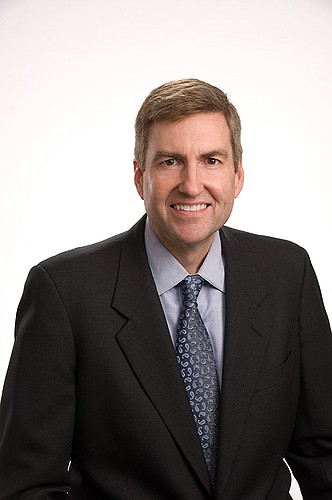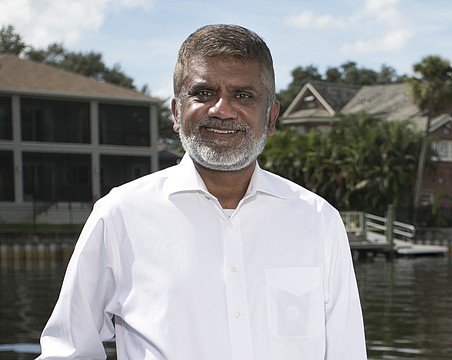Ron Wheeler
CEO
Sembler Co.
St. Petersburg
Ron Wheeler is the chief executive officer of Sembler Co., a firm that over the course of its more than 50-year history has developed more than 325 projects containing more than 27 million square feet of mostly retail real estate throughout the southeastern U.S. and Puerto Rico. The company also manages and leases 12.5 million square feet. Wheeler joined Sembler in 1997 as vice president of investments, after a decade with NCNB and First Union National Bank, where he was vice president of commercial real estate lending. Within Sembler, he was promoted to chief operating officer before being elevated to CEO.
Sembler had growth across all of its platforms in 2016 — ground-up development, build-to-suit activity, property management, leasing, and sales and acquisitions. Is that typical in a growth cycle?
Between 2008 and 2010 we and everyone else had some really bad times, and since then, the market has been a little more predictable, but not explosive, which is just fine with me.
Leading up to 2007, we had what I'll term explosive growth. As the market stabilized and normalized a bit post-economic recession, we decided to really focus on what we wanted to do and what we did best, and what deals made sense from a risk standpoint.
There's a little uncertainty now, with the unknown in the tax structure and the belief that interest rates will be rising in the short-term future. But beginning in about 2012, we saw occupancy firm up and (net operating income) firm up at mostly all of our centers, and occupancy has risen to 95% in many of them. When that occurs, there are development opportunities, so yes, everything tends to follow a trend line together.
Sembler has about 535,000 square feet of space under development now. How does that compare to the amount the company typically has in the pipeline?
In 2010, we weren't coming out of the ground with anything at all, so our current level represents a significant increase from then. But the current level today is actually modest compared to some of our bigger years, like 2007.
Retail delivery has been fairly modest the past couple of years. Last year, we were at 25% of our deliveries from the peak years of a decade ago, because a lot of tenants haven't gotten back into expansion mode and some are doing smaller stores now. At the same time, a lot of malls are getting back a lot of space from former anchors, like Sears and Macy's, and their space is being repurposed. That's going to impact us and everyone and suppress the industry's numbers for awhile because of all the shadow supply that's going to come online.
Health and wellness tenants, along with beauty and fitness purveyors and restaurants have been a big trend in retail centers. Is that continuing?
That trend is not only continuing, it's accelerating. In 2009, roughly half our grocery-anchored centers were occupied by what I'll call traditional merchants. There would be a Hallmark card store, maybe a separate gift store, a dry cleaner, maybe a postal store. Back then 31% of our centers were occupied by restaurants, and another roughly 20% by health and wellness tenants.
In 2015, the percentages had shifted to one-third for each category. Traditional retail had shrunk to one-third from one-half in six years.
Now, roughly 83% of the new leases we do are for nontraditional retailers. That's a pretty dramatic shift and a reflection of how we live now. It's also why our occupancy is up despite the gains made in online retailing. Doctors and beauty salons are now going into retail centers like never before because they're convenient, well-located, have ample parking and have good access in and out.
Sembler is developing a new 80,000-square-foot center in the West Villages master-planned community in south Sarasota County, essentially a ground-up development. Is there a different development approach Sembler has to take when building in a “pioneer location?”
It's not a huge different in how we approach the development, but the primary difference is in partnering. You have to be keenly aware of what's important to the land owners, who correctly view a retail center as an amenity for the overall neighborhood. And often that means they want to have input on the center's architectural design and whether the center will be of a quality that they're looking for.
Sembler established a fund with Forge Capital Partners to acquire assets. Have much property has the fund purchased to date?
We've together acquired just over 1 million square feet of space in eight centers throughout the southeastern U.S. The vast majority of the properties are grocery anchored and occupancy is at 95%. Right now we're under contract to buy two more centers containing about 250,000 square feet, so we're close to maxing out that particular fund. It's been really successful for us.
You indicated to Sembler staff that in 2017 the company will complete more ground-up development than it has in several years. Why do you believe that?
We expect to deliver all of the 535,000 square feet we have under construction now in the next 24 months, with a lot of that coming in 2017, so that would give us our nest year for deliveries since 2008. A lot of that is attributed to the fact that projects we'll finish this year were ones we began planning in 2012 and 2013.
You believe that grocery chains are in for further “price deflation” in 2017, meaning prices for goods will drop, and that that may prompt industry consolidation. Why?
We study this a lot because grocery stores are such a big part of our centers. All six major food indices dropped in 2015 and 2016 — meat, poultry and fish, for instance, declined 2.2% during that time and the price of eggs fell 33.8%.
In a business that tends to operate on pretty slim margins anyway, a decline of that nature and magnitude really hits revenue. With all the new chains coming into this market competing for essentially the same dollars, there have to be winners and losers, so that's why I believe there will eventually be consolidation.
Apparel is becoming a larger part of the e-commerce business. Do you see that continuing, and what impact do you expect that to have on brick-and-mortar apparel retailers?
I think you're going to see more retailing going the way of the omni-channel model; we're already seeing it. Merchants will sell online and in stores. A consumer will see something in a store and then buy it online. I don't see that reversing.
Smart retailers are already working to convert those sales. I think there will always be a market for apparel sales in stores, but I think going forward you won't see any pure plays — either strictly online or strictly from brick-and-mortar operators.






